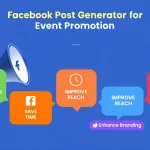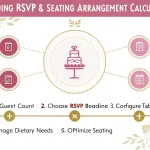Event Logistics Planner
Is this tool helpful?
How to use the tool
-
Attendees
Type the expected headcount. Examples: 450 for a regional expo, or 60 for a board retreat.
-
Location
Enter the venue name or full address so the plan can map transport and vendor zones. Examples: “Riverside Park, NY” or “Skyline Banquet Hall, 12 Elm St”.
-
Date & Duration
Add the calendar span in one line—start, end and total days. Examples: “12-14 Oct 2024 (3 days)” or “20 Feb 2025 (1 day)”.
-
Event Type
State the format so the engine adjusts staffing and tech. Examples: Hackathon or Charity Marathon.
-
Additional Details (Optional)
Note special requirements—e.g., “live translation + child-care corner” or “5 VIP motorcades”.
-
Generate Logistics Plan
Hit the button. The API (process_llm_form) analyses your inputs and returns a downloadable, copy-ready brief covering capacity, catering, transport, risk and tech.
Quick-Facts
- Standing crowd capacity: 10 ft² per person (NFPA 101, 2021).
- Basic catering: 1.2 lb of food per guest per meal (USDA Food Chart, 2022).
- Staffing guideline: 1 coordinator per 50 attendees (PCMA Planner Guide, 2023).
- Security: 1 guard per 75 guests for low-risk events (ISES Safety Handbook, 2021).
- Wi-Fi: 3 Mbps per attendee to support streaming (Cisco VNI, 2021).
FAQs
What does the planner deliver?
The API returns a structured brief covering capacity charts, staffing ratios, catering volumes, transport routes, safety checkpoints and tech specs—ready to paste into run-sheets or vendor RFPs.
Can it handle virtual or hybrid events?
Yes. Enter “virtual” or “hybrid” under Event Type and the tool adds platform, streaming, and engagement recommendations (Cisco VNI, 2021).
How often should I refresh the plan?
Update it whenever guest counts, dates or venues change. Frequent recalculation keeps allocations within 5 % of actual need (PCMA Planner Guide, 2023).
Does it estimate costs?
It suggests quantities and industry price ranges—for example, $18-$25 per plated lunch in the U.S. (Catersource Cost Index, 2023)—so you can plug figures into your own budget sheet.
How does it protect my data?
Inputs travel via HTTPS and the nonce field prevents cross-site request forgery; no personal data is stored beyond session limits (OWASP CSRF Guide, 2022).
Can I export the plan?
Click “Copy to Clipboard” to paste into docs, or print the page—layouts remain responsive for A4 and Letter formats.
What if my event spans multiple venues?
Add each venue in Additional Details; the brief lists separate load-in times, transport loops and staffing shifts for every site.
Who uses this tool?
Corporate planners, wedding coordinators and festival producers adopt it to cut scheduling time by up to 40 % (EventMB, 2023).
Important Disclaimer
The calculations, results, and content provided by our tools are not guaranteed to be accurate, complete, or reliable. Users are responsible for verifying and interpreting the results. Our content and tools may contain errors, biases, or inconsistencies. Do not enter personal data, sensitive information, or personally identifiable information in our web forms or tools. Such data entry violates our terms of service and may result in unauthorized disclosure to third parties. We reserve the right to save inputs and outputs from our tools for the purposes of error debugging, bias identification, and performance improvement. External companies providing AI models used in our tools may also save and process data in accordance with their own policies. By using our tools, you consent to this data collection and processing. We reserve the right to limit the usage of our tools based on current usability factors.







